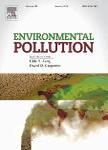版权所有:内蒙古大学图书馆 技术提供:维普资讯• 智图
内蒙古自治区呼和浩特市赛罕区大学西街235号 邮编: 010021

作者机构:Ctr Rech Biodivers & Environm CRBE UMR5300 Ave Agrobiopole F-31326 Auzeville Tolosane France
出 版 物:《ENVIRONMENTAL POLLUTION》 (环境污染)
年 卷 期:2024年第350卷
页 面:123894页
核心收录:
学科分类:0830[工学-环境科学与工程(可授工学、理学、农学学位)] 08[工学]
基 金:JPI-Ocean EU Project [PRES- AGE] Centre National de la Recherche Scientifique (CNRS) at INP- ENSAT/CRBE Lab French National Research Agency (AnR) [ANR-21-AQUA-0003-05] Agence Nationale de la Recherche (ANR) [ANR-21-AQUA-0003] Funding Source: Agence Nationale de la Recherche (ANR)
主 题:Antibiotics Microbiota Anti -microbial resistance Antibiotic resistance genes Mobile genetic elements
摘 要:Antibiotic resistance (AR) is one of the major health threats of our time. The presence of antibiotics in the environment and their continuous release from sewage treatment plants, chemical manufacturing plants and animal husbandry, agriculture and aquaculture, result in constant selection pressure on microbial organisms. This presence leads to the emergence, mobilization, horizontal gene transfer and a selection of antibiotic resistance genes, resistant bacteria and mobile genetic elements. Under these circumstances, aquatic wildlife is impacted in all compartments, including freshwater organisms with partially impermeable microbiota. In this narrative review, recent advancements in terms of occurrence of antibiotics and antibiotic resistance genes in sewage treatment plant effluents source compared to freshwater have been examined, occurrence of antibiotic resistance in wildlife, as well as experiments on antibiotic exposure. Based on this current state of knowledge, we propose the hypothesis that freshwater aquatic wildlife may play a crucial role in the dissemination of antibiotic resistance within the environment. Specifically, we suggest that organisms with high bacterial density tissues, which are partially isolated from the external environment, such as fishes and amphibians, could potentially be reservoirs and amplifiers of antibiotic resistance in the environment, potentially favoring the increase of the abundance of antibiotic resistance genes and resistant bacteria. Potential avenues for further research (trophic transfer, innovative exposure experiment) and action (biodiversity eco-engineering) are finally proposed.